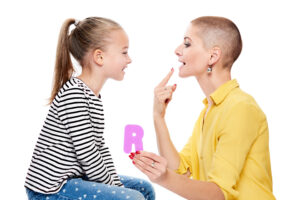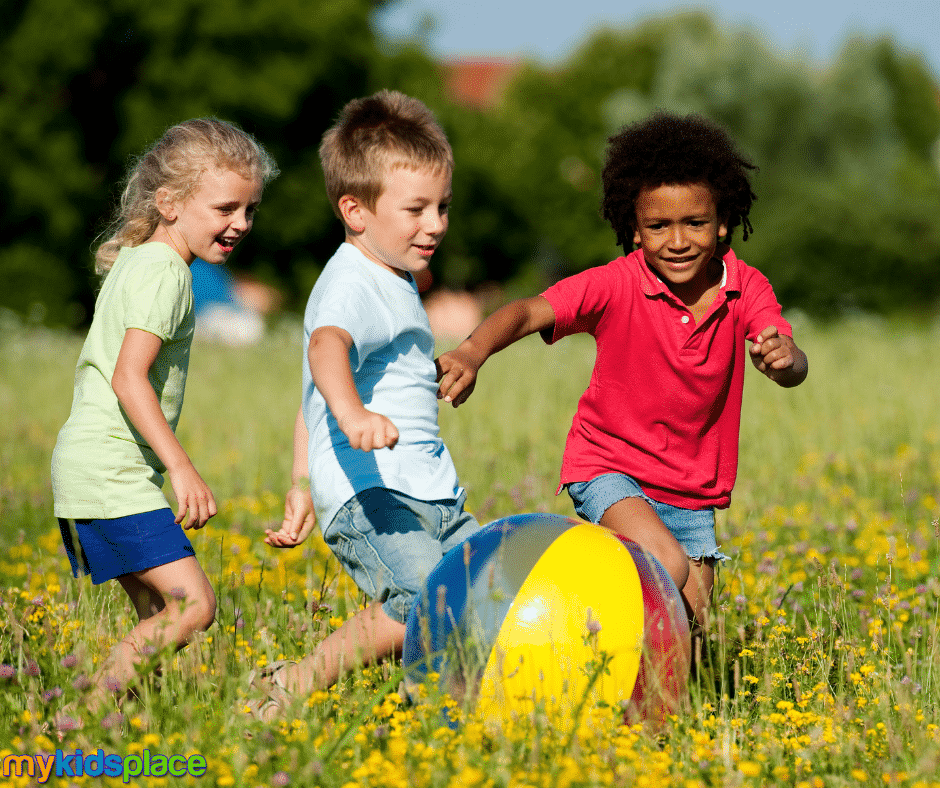
Do you remember learning the ABCs? I bet, even as an adult, you still sing them in your head. Or what about playing the “silent” game with your parents as a kid? You may have used that same game with your own kids when in need of a peaceful moment. Have you wondered why, years later, you still remember nursery rhymes yet remembering a password or where you left your keys allude you? It is likely because you learned the former through play and fun.
You may have noticed that routines run more smoothly with kids if tasks are provided as games instead of demands; “Who can put their shoes on faster? Who can clean up the most toys?” Not only do these “games” make the caregiver’s life easier, they foster development and learning. Play contributes to fine and gross motor skills, and physical strength as well as social, emotional, and cognitive development. Play is the main occupation of children meaning it is their “job” to play. Kids learn and grow through evolving types of play at different stages of life. Continue reading to learn about four different types of play and ways in which caregivers can create a playful environment.
Exploratory Play
Exploratory play begins at birth and ends around 2 years old. This type of play is highly sensory, meaning that infants are exploring and learning about the world through their senses. You may have noticed how crawling babies seem to find every piece of trash the vacuum missed! This also explains why every object they touch ends up in their mouths. The more we touch and taste, the more we learn! As adults, our hands are more attuned to touch so we do not need to explore as much with our mouths.😉 Engaging with the environment and receiving input through the sensations yields great significance for development (NHSGGC, 2017).
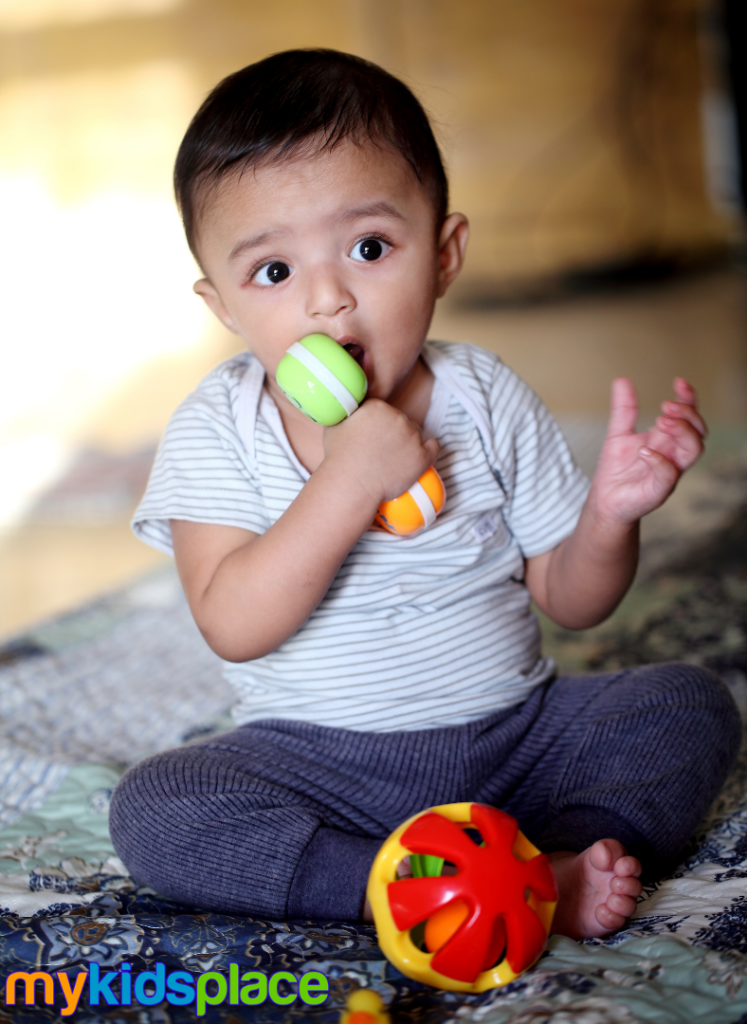
When receiving tons of new sensory input, infants are learning how to process, organize, and formulate responses to sensory stimuli. This “sensory integration” is used in essentially every activity throughout the day. Consider how you test the water temperature before getting into the shower, or how you look and listen for cars before crossing the street. Sensory integration keeps us safe!
Exploratory play also facilitates gross motor skill development. Gross motor skills precede fine motor development and are needed to explore the environment. Our senses alert us to the world around us, and we want to learn more! Our curiosity drives us to seek out answers, and to do this we have to be able to move!
Ideas for Caregivers
So, the best way to facilitate exploratory play is to provide opportunities for infants to use their senses. Try finger painting with water on a mirror, or making a rattle out of a water bottle and beans. Specific toys, such as “rattles, mobiles, play-mats, mirrors, crib toys, infant swings, teething toys, busy boxes, squeeze toys” all encourage infants to use their senses to play (NHSGGC, 2017).
Symbolic Play
Symbolic play occurs between 2 and 4 years old as children transition out of exploratory play. Toddlers begin interest in the activities and people around them. Toddlers may try to replicate what they see like building a “house” out of blankets, or talking into a banana as if it is a phone. These might seem like simple actions, however, symbolic play has a crucial role in language, emotional, social, and academic development.
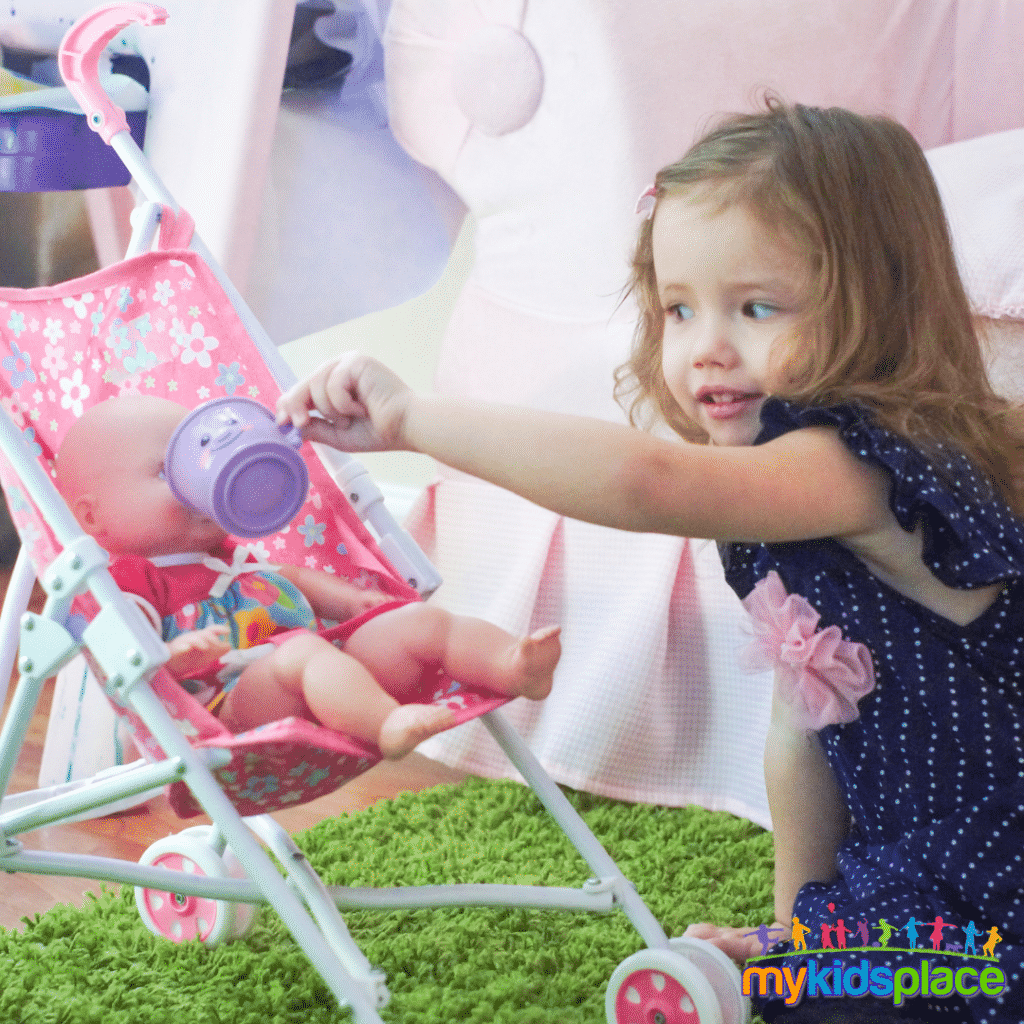
For example, transforming an empty box into a boat requires verbal planning, activity sequencing, and problem solving. In addition, fine and gross motor skills are refined as children manipulate and interact with the materials and toys that are available to them. In addition, parallel play occurs at this stage as children play alongside each other, but do not interact. Despite this lack of interaction, children are still practicing how to engage and interact with peers (Mcilroy, 2020).
Importantly, emotional and social development are emphasized in this stage of play as children express their feelings and emotions through the activities they choose to act out. A child may not be able to verbalize their emotions, so they may use symbolic play to demonstrate how they feel. You may see your child comforting their doll before the doll has to see the doctor. In this way, symbolic play is a great way to prepare your child for new or scary experiences. Consider acting out something new using stuffed animals as you and your child talk through what could happen.
Ideas for Caregivers
Encourage symbolic play by letting your child guide new activities with supervision; see what your child does with popsicle sticks and play-doh. There is no “right” or “wrong” way to use objects at this stage. Providing as little structure as possible enables your child to use their creativity, problem solving skills, and application of real life knowledge (Mcilroy, 2020). In addition, dolls, stuffed animals, toy furniture, puppets, and telephones all provide great opportunities to rehearse social skills and encourage creativity and role playing (AOTA, 2020).
Creative Play
Creative play is similar to symbolic play in that it fosters creativity and imagination. However, creative play is more complex as kids in this stage will seek out social interactions and create more intricate storylines. Around 4 to 7 years old, kids have acquired a significant amount of information about the world around them and want to use their knowledge. Instead of playing with a toy on its own, children begin combining activities and staging events. Your child may plan a tea party for all of their dolls and stuffed animals, creating storylines for each one.
Creative play cultivates cognitive flexibility and problem solving skills as kids use whatever is available to them to act out their imagined stories. Cognitive flexibility is the ability to adapt and respond to changes; a crucial skill as this stage is accompanied by increased peer interaction. Peer collaboration to reach a common goal requires self-regulation, discipline, and impulse control (Spiegel, 2008). These skills are extremely important for adult-life, so fostering creative play is integral for functioning in later life.
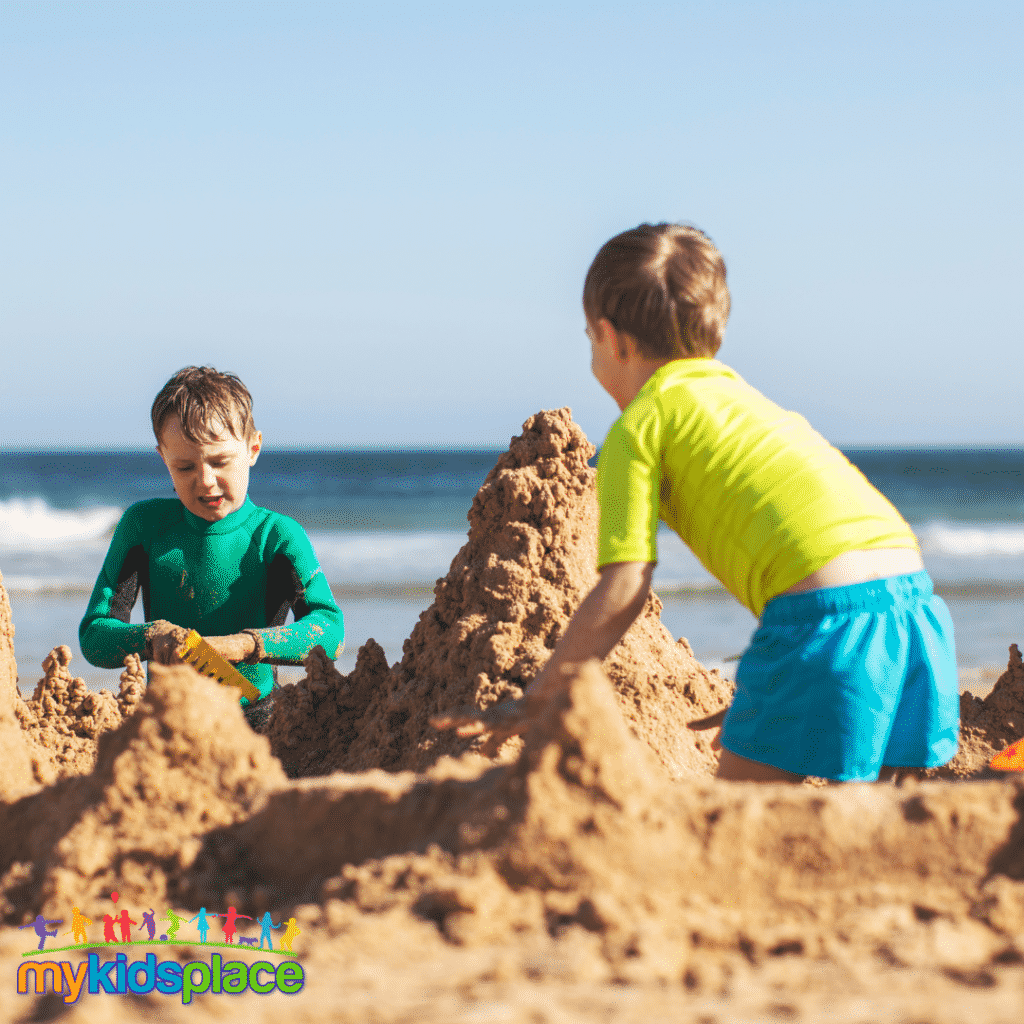
Ideas for Caregivers
Caregivers can facilitate creative play by providing toys or materials that allow the use of imagination. This can include arts and crafts materials, dress-up clothes, or spending time outdoors for exploring. Again, allow your child to lead the activity. Caregivers can encourage children to expand their minds by asking things like, “What do you think will happen next?” or “How do you think we could use these props?” You’ll be amazed at what kids come up with!
Games
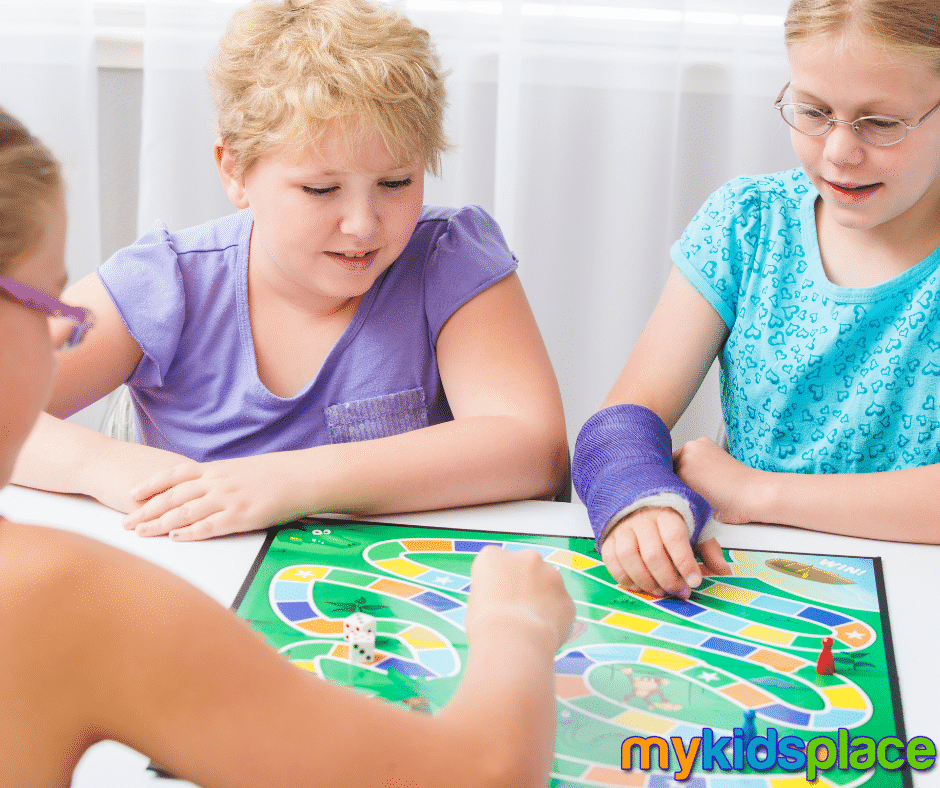
By 7 to 12 years old, kids typically begin engaging in games with rules and teams. This includes board games, video games, athletics, or school yard games like tetherball. This type of play involves a level of competition and social interaction as well. Peer interaction and validation become more important than familial validation to the child during this stage.
Games emphasize the development of cognitive, social, and emotional skills. Skills such as turn-taking, compromise, communication, teamwork, sportsmanship, and following the rules are practiced. Executive functioning skills such as sequencing next steps, planning for consequences, and problem solving for strategies are developed. Games also build self-efficacy, confidence, and emotional regulation, such as how a child accepts defeat. Will they congratulate the winner or will they lose confidence in their abilities? Supporting your child through wins and losses will promote perseverance and positive self-esteem.
Ideas for Caregivers
Take advantage of playing board games at home as a way to model good sportsmanship and rule following in a structured environment. Provide opportunities for participation in games with peers by enrolling your kids in team sports or clubs. Emphasize having fun as the main goal, with success viewed as a result of hard work.
Conclusion
Playtime provides more than just a break for kids. It develops fine and gross motor skills, and facilitates physical, social, emotional, and cognitive development. Caregivers can promote different types of play by providing a variety of objects and opportunities to explore different environments. If you have concerns with your child’s play development, please feel free to contact us!
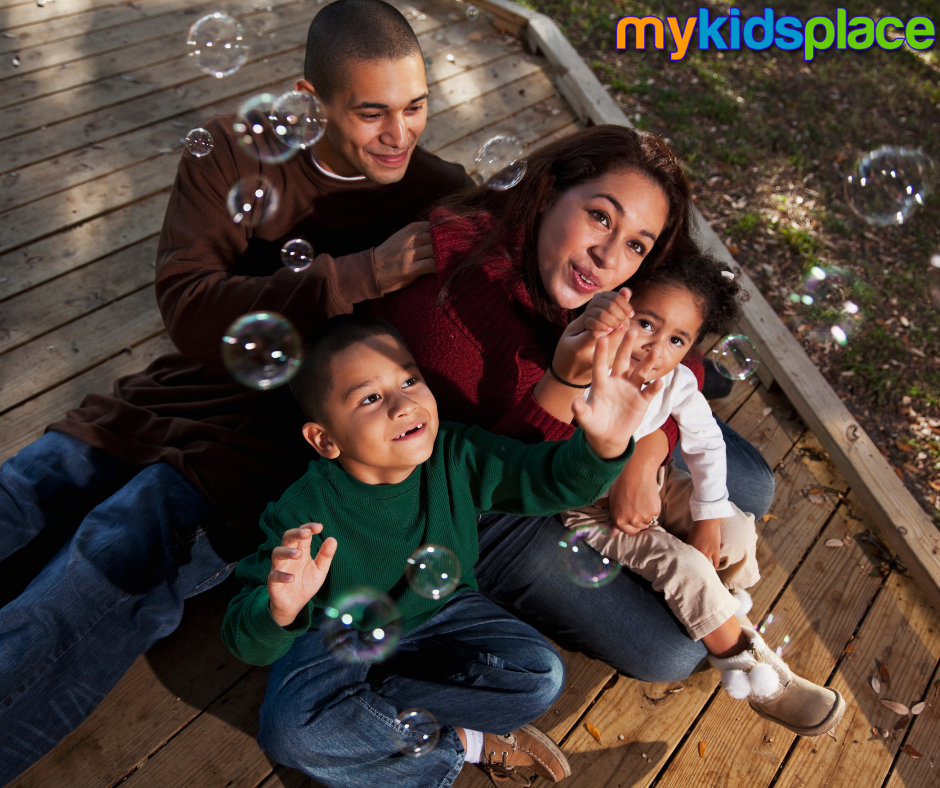
References
Explorative Play. (2019, November 20). Retrieved May 6, 2020, from https://www.nhsggc.org.uk/kids/life-skills/play-leisure/explorative-play/
Fleming-Castaldy, R. P. (2017). National occupational therapy certification exam review & study guide. Evanston, IL: TherapyEd.
Mcilroy, T. (2020, May 4). 7 Reasons Your Child Needs to Engage in Symbolic Play: How to Make It Happen. Retrieved May 6, 2020, from https://empoweredparents.co/symbolic-play/
(n.d.). Retrieved May 6, 2020, from https://www.aota.org/About-Occupational-Therapy/Patients-Clients/ChildrenAndYouth/Play.aspx
Spiegel, A., & Valentine, V. (2008, February 28). Creative Play Makes for Kids in Control. Retrieved May 6, 2020, from https://www.npr.org/templates/story/story.php?storyId=76838288

